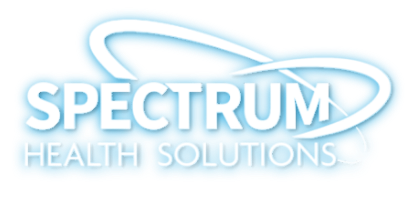Resources > Blog > Case Study > Spectrum
Case Study
AI Drives Better Care for High Risk Patients at Home

Case Studies
THE NEED FOR BETTER HOME HEALTHCARE
Spectrum Health Solutions was begun back in 2018 as a response to the rising cost of health care – most of which offered an extremely reactive approach to caring for patients. Since its inception, Spectrum had seen the cost of healthcare continue to rise, along with an increase in healthcare needs and a heightened amount of the population (an estimated 60%+) not being able to afford an unexpected bill of $400 or more.
On top of that, the largest transfer of wealth – the so-called Silver Tsunami – had just begun transpiring in the US and around the globe. There was somehow more money now than ever before, but too little of it was being used to prepare better healthcare solutions for people proactively.
And then the COVID-19 Pandemic hit, and suddenly there wasn’t just a great need for better healthcare solutions; there was a need for solutions that could be extended remotely and digitally as well. Suddenly, healthcare was replacing home payments as the greatest worry of individuals on a month-to-month basis.
Spectrum, which owns and manages physician’s offices as well as care homes, saw an opportunity to provide affordable, more proactive healthcare in home situations, as well as remotely and digitally. But how exactly to deliver all these services effectively and know which solutions would work best for specific patients?
90% of the US’s 3.8 trillion annual healthcare expenditure was for patients suffering from chronic and cognitive health conditions. Six main diseases and conditions comprised 90%: Heart disease, Cancer, Diabetes, Obesity, and Alzheimer’s.
INTERGEN’S AI AND MACHINE LEARNING LEND A HAND
InterGen Data offered the kind of AI and ML abilities that Spectrum Health was looking for. After some exploratory meetings and demonstrations of the sophistication of InterGen’s data and software, Spectrum made the decision to move forward with a comprehensive proof of concept.
Spectrum collated and provided a file of anonymized patient information for each care home, data such as age, gender, what profession they were before retiring, race, and much more. The files were arranged by the care home, including location.
InterGen Data then sourced a vast array of publicly available data, mostly from government agencies, to run the patient profiles against. The algorithms applied included the company’s patented AI technology for both historical and predictive analyses.
The results were then further mapped against a database of expenses associated with the costs of servicing the main diseases and conditions and the associated insurance costs and long-term care.
PROOF OF CONCEPT RESULTS AND APPLICATIONS
The results of InterGen’s proof of concept exceeded even Spectrum’s expectations. They were insightful, granular, and of enormous potential value to optimize the services offered by Spectrum’s physician offices and care homes. They also helped support the short, medium, and longer-term vision of Spectrum’s business goals.
![]()
Ultimately, Spectrum’s desire was to acquire more businesses for their group and provide enhanced services to these offices and homes, increasing efficiency and overall revenues and profitability.
The four proofs of concepts developed with InterGen Data proved to be achievable, with the following outcomes:
- Predicting insights into the likelihood of care home residents contracting a particular disease, when the condition was most likely to occur, and the associated costs. This would enable the home to meet these needs by being able to anticipate and plan more accurately, so the right staffing level was in place, with the right set of skills and specializations.
- Developing partnerships with financial services companies to earn referral fees for care home resident family members. It would work along the lines of “you can see the predicament and financial pain faced by your elderly relative, whether due to a lack of awareness of the problem, lack of funds, or the lack of financial forward planning. However, you can plan for this to protect you and your family, by attending a consultation with one of our financial advisors, with whom we partner.”
- In terms of physician offices, with the InterGen Data insights, education and advice could be provided to patients, predicting the likelihood of contracting a particular disease or condition and the preventative measures that could be taken. The costs of contracting the condition could also be included. The analysis included genetic factors, further highlighting the customized nature of the insight.
- And last but not least, to support the acquisition of more businesses. More accurate business valuations could be used to determine the value of a target using the “predictive” analysis generated by the InterGen Data models. This was one of many competitive advantages that the CEO felt particularly excited about.
Spectrum Health Solutions kicked off their project, based on InterGen Data’s input, in early 2022 and fully implemented in the spring.
